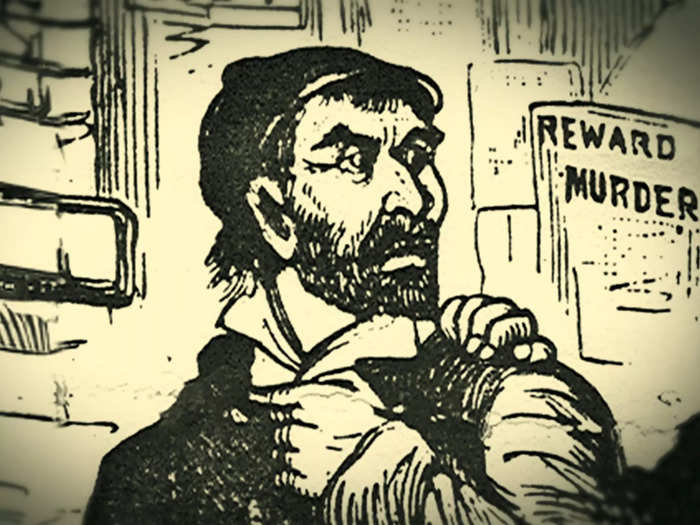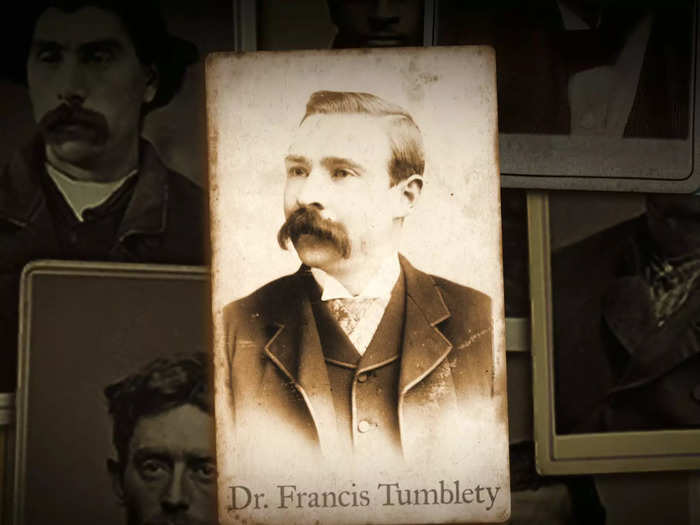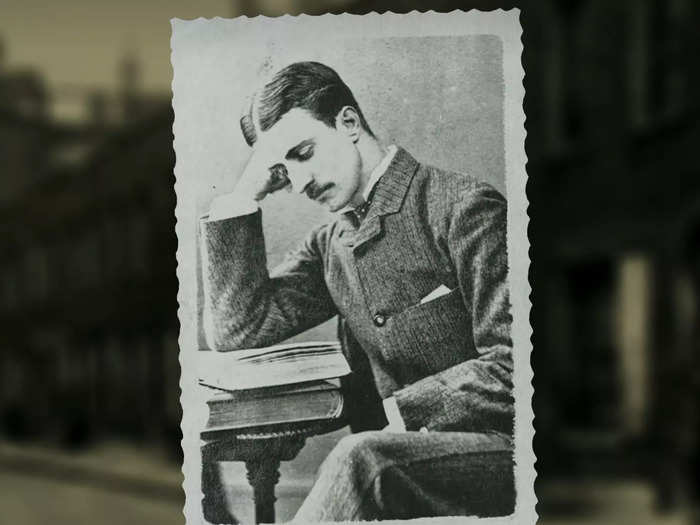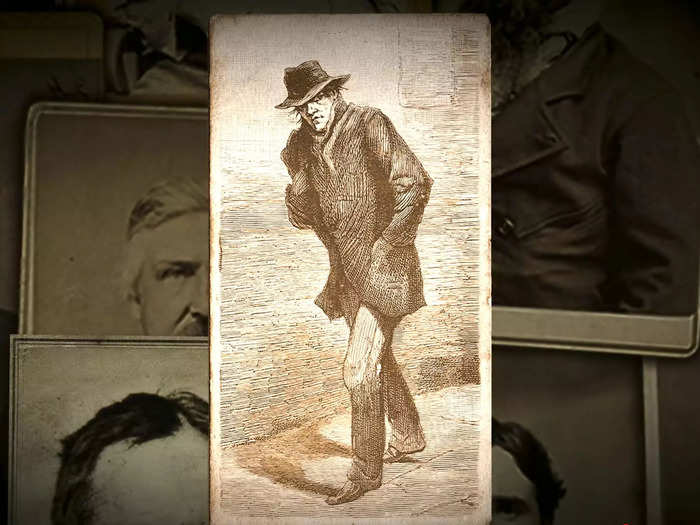Montague John Druitt and Aaron Kosminski are two Jack the Ripper suspects.Netflix
- The first episode of Netflix's "Unsolved Mysteries" looks at British serial killer, Jack the Ripper.
- The infamous murderer killed five women in London in 1888.
Netflix's true crime series, "Unsolved Mysteries," has returned for a fourth season and it kicks off with the story of Jack the Ripper.
The Ripper has never been formally identified, but there are plenty of theories about who could have murdered at least five women in London's east end in 1888, which have captivated true crime fans for decades.
The gruesome mystery has been turned into various TV shows and movies — including Johnny Depp's "From Hell," as well as the "Edge of Sanity," "Ripper Street," and "Whitechapel," which have helped keep interest in the mystery alive.
The killer disappeared after murdering his final victim, a sex worker called Mary Jane Kelly, on November 9, 1888. Here are the four main suspects examined by "Unsolved Mysteries."
Jon Pizer/Leather Apron
An illustration of Jon Pizer in Netflix's "Unsolved Mysteries." Netflix
The police started looking into a suspect dubbed "Leather Apron" following the death of Polly Nichols, the Ripper's first victim, on August 31, 1888. Sex workers in Whitechapel told police that a man who wore a leather apron had physically assaulted them, which made the police suspect that this person was the killer.
The authorities later found a leather apron close to where a second victim, Annie Chapman, was murdered on September 8, 1888.
Crime historian Adam Wood explained in the Netflix series that a man called Jon Pizer was later identified as "Leather Apron."
According to Jack-the-ripper.org, a website run by historian Richard Jones who also appears in "Unsolved Mysteries," police arrested Pizer on suspicion of murder.
Pizer told an inquest into Chapman's death on September 12, 1888 that he used the leather apron nickname. But he was later released because he had solid alibis for the deaths of Nichols and Chapman.
The website states Pizer told the Press Association after his release: "They found nothing in my possession that would incriminate me, thank God. I know of no crime, I have been connected with no crime, and my character will bear the strictest investigation, both by my co-religionists and Gentiles whom I have worked for."
Francis Tumblety
A photo of Dr. Francis Tumblety seen in Netflix's "Unsolved Mysteries." Netflix
The docuseries also notes that because the term "serial killer" hadn't been invented yet, the press and the public were convinced that only people with specific jobs or medical knowledge would be able to carry out the brutal murders.
In the episode, author and historian Paul Begg refers to "the deranged doctor, a midwife, a butcher… Because they had various skills that Jack the Ripper had."
One person who fitted the description was an American man named Dr. Francis Tumblety. Per the UK's National Archives, John George Littlechild, ex-detective chief inspector of the London Metropolitan Police, considered Tumblety a suspect.
A YouTube video on Tumblety by Jack the Ripper Tour, which is run by Jones, uses news clippings and archive documents to point to argue the was doctor misogynistic, including keeping jars of uteruses that had been surgically removed from women on shelves in his office.
According to Casebook, a dedicated Ripper website, Tumblety was arrested for "gross indecency" and was charged over what were known as the Whitechapel murders in November 1888. The five women killed by the Ripper are thought to have been part of the 11 victims that make up the Whitechapel murders.
Tumblety was given bail and returned to the US where he remained until he died in 1903 in Rochester, New York.
Montague John Druitt
A photo of Montague John Druitt seen in Netflix's "Unsolved Mysteries." Netflix
The series also presents Montague John Druitt, a barrister and a teacher, as a person of interest. He was dismissed from a London boarding school in November 1888 for unknown reasons.
His body was found in the Thames on December 31, 1888, and he is thought to have died by suicide. The authorities looked at suspicious suicides after the Ripper killings stopped as a potential explanation for what happened to him.
According to Jack-the-ripper.org, assistant chief constable Melville Macnaghten of the London Metropolitan Police wrote in a memorandum dated 1894: "From private information I have little doubt but that his own family suspected this man of being the Whitechapel murderer, it was alleged that he was sexually insane."
However, Managhten never shared the information he claimed to have, and it is not known why Druitt's family suspected him of being the Ripper.
Jack-the-ripper.org also notes that the lead investigator of the murders, London Metropolitan Police inspector Frederick Abberline, doubted Druitt was the killer.
In 1903, he told the Pall Mall Gazette: "I know all about that story. But what does it amount to? Simply this. Soon after the last murder in Whitechapel the body of a young doctor was found in the Thames, but there is absolutely nothing beyond the fact that he was found at that time to incriminate him."
Aaron Kosminski
An illustration of Aaron Kosminski in Netflix's "Unsolved Mysteries." Netflix
The episode briefly explains that the police identified a man called "Aaron Kosminski" as a suspect, a Polish Jew who lived near where the murders happened.
Per Jack-the-ripper.org, Macnaghten concluded that Kosminski was a misogynist — although he doesn't state why — but said that his hatred of women made him a suspect.
"This man became insane owing to many years indulgence in solitary vices. He had a great hatred of women, especially of the prostitute class, & had strong homicidal tendencies; he was removed to a lunatic asylum about March 1889," he wrote.
It's unclear what hard evidence the authorities had to suspect Kosminski. However, he was admitted to Colney Hatch Asylum in 1890 after threatening his sister with a knife, according to Casebook.
He was moved to Leavesden Asylum in 1894, and stayed there until his death in 1919.
In 2014, author Russell Edwards claimed that he had proof that Kosminski was Jack the Ripper thanks to a bloody shawl found at one of the murder scenes. He said that the DNA samples found on the scarf matched the living relatives of both Kosminski and the victim, The Independent reported.
However, Ripper expert Richard Cobb told The Times that the age of the shawl made it impossible to determine Kosminski's guilt because it could have been contaminated over the last century.




